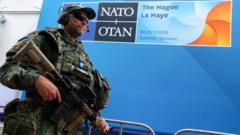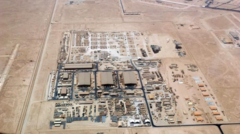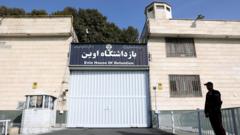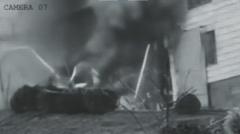Following the U.S. airstrikes on key Iranian nuclear facilities, a Pentagon report has indicated that the attacks did not destroy Iran's nuclear program but rather set it back by a few months. Despite President Trump’s assertions of complete destruction, sources reveal that much of Iran's infrastructure remains intact.
Pentagon Report Disputes Claims of Total Destruction of Iran's Nuclear Capabilities
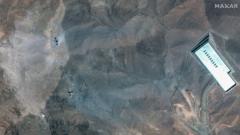
Pentagon Report Disputes Claims of Total Destruction of Iran's Nuclear Capabilities
A recent Pentagon intelligence assessment suggests that U.S. airstrikes on Iran only postponed nuclear program advancements rather than completely dismantling them.
The U.S. airstrikes targeting Iran's nuclear sites did not achieve the complete obliteration of the Islamic Republic's nuclear program as previously claimed, according to a Pentagon intelligence assessment. The strikes, which were aimed at the Fordo, Natanz, and Isfahan facilities, reportedly resulted in limited damage that may only have delayed Iran's advancements for a few months, rather than eradicating its capabilities altogether.
Sources familiar with the Defense Intelligence Agency's evaluation indicated that while the attacks utilized powerful "bunker buster" bombs capable of penetrating extensive underground structures, Iran's centrifuges remained largely intact and operational. Despite damage to some aboveground facilities and the sealing off of entrances to designated nuclear sites, critical infrastructure appears to have survived in a more robust state than initially anticipated.
Contrary to President Donald Trump’s strong assertions that the airstrikes had "completely and totally obliterated" Iran's nuclear enrichment facilities, the White House has responded to the Pentagon's assessment, characterizing it as "flat-out wrong." Official statements suggested that the evaluation may serve a political agenda aimed at undermining the President's claims regarding national security efforts in the region.
Intelligence sources further noted that some of Iran's enriched uranium stockpile had been relocated prior to the airstrikes, evidence that the Iranian government had taken precautionary measures aimed at protecting its nuclear assets amidst rising tensions with the United States.
As the geopolitical landscape continues to evolve and the discourse surrounding nuclear capabilities heightens, the implications of this assessment could have significant ramifications for U.S.-Iran relations and broader international treaties concerning nuclear proliferation.



